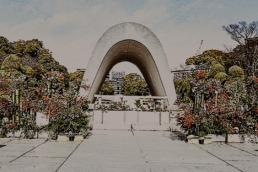Sake: Three Fun Facts About Japan's Iconic Drink
Sake is more than just an alcoholic beverage; it is a true piece of Japanese culture, closely tied to the history, traditions, and even spirituality of the Land of the Rising Sun. Although it is often referred to as “rice wine,” its production is unique and its significance goes far beyond simple taste. When talking about rice-based beverages, the ideogram sake [酒] generally refers to alcohol, but is pronounced shu. When the Japanese talk about beverages made with rice, they use the term nihonshu [日本酒], which means “drink of Japan.”
Now, get ready to discover three fascinating facts that will make you see sake in a whole new light!

1. Sake is not a distilled beverage
Many people believe that sake is similar to liquor or spirits, but in reality, its production process is closer to that of beer. The rice used is first polished to remove impurities, then steamed and fermented using a special fungus called koji. This turns starches into sugars, allowing the yeast to start the alcoholic fermentation.
The result? A drink with a complex and delicate flavor, with an alcohol content of between 13% and 16%. And if you thought there was only one type of sake, think again: there are lighter, unfiltered, sparkling and even aged varieties!

2. A connection to the sacred
Sake is not only a pleasure for the palate, but also a deeply rooted element in Japanese religious traditions. Ancient legends say that even the gods appreciated it: the storm god Susanoo-no-Mikoto is said to have defeated a dragon by offering it eight barrels of sake.
To this day, the drink is still used in Shinto rituals, especially at weddings and in offerings to the kami (Japanese deities). During some festivals, such as the Doburoku Matsuri, unfiltered sake is distributed to participants, creating a link between the sacred and conviviality.

3. Sake etiquette
It is not enough to fill a glass and drink, sake has a real code of conduct. Traditionally, it is drunk in small ceramic cups (choko) or in elegant wooden boxes (masu). But there is one golden rule: never pour it yourself! It is an impolite gesture, while pouring it for others is a sign of respect and sharing.
Temperature also matters: in the winter it can be enjoyed hot, while in the summer months it is more appreciated fresh or even cold. Each serving method brings out different aromas, making each sip a unique experience.
A toast to tradition!
Sake is not just a drink, it is a journey into Japanese culture. Next time you have the opportunity to taste it, remember to raise the cup and toast with a traditional "Kanpai!" – and maybe surprise your friends with these curiosities!
Our relationship with Sake
Japan Italy Bridge has often dedicated itself to the promotion of sake, carrying out numerous initiatives, including the Bunka Academy. The goal was to raise awareness in Italy of how to appreciate sake, emphasizing that it is not a grappa, but a real wine. It is not a drink to be consumed only at the end of a meal, but to be enjoyed throughout the dinner. Unlike wine, sake does not cover the flavors of dishes, but enhances them. For this reason, Japan Italy Bridge has organized events in collaboration with Japanese experts, who have shared with the public the history, the production process and the secrets of consuming and preserving sake.
If you are curious, we invite you to take a look at our portfolio and discover all the collaborations we have carried out.
The Forgotten Artist of Osaka: The Magic of Nakamura Hōchū
When we talk about the Rinpa school of art, we often think of the great names of Kyoto, but there was one artist who managed to make this style shine in Osaka too: Nakamura Hōchū. His life remains shrouded in mystery, but what is certain is that he was an innovator capable of reinterpreting tradition with his own touch.
Hōchū began his career immersed in the cultural environment of Osaka, a lively city full of artistic stimuli. Initially influenced by the Nanga style, he loved to hang out with poets and scholars, including Kimura Kenkadō, with whom he shared a passion for beauty and nature. But the real turning point came when he discovered the works of Ogata Kōrin, one of the great masters of the Rinpa school. It was love at first sight: the vibrant colors, elegant shapes and refined composition won over Hōchū, who decided to dedicate himself to this style, reinterpreting it in an original way.

Photos: Wikipedia
His most famous work, the "Kōrin Gafu", is a true celebration of Rinpa. It is an illustrated book that collects paintings of flowers, landscapes and scenes of daily life, created with extraordinary elegance and lightness. But unlike his predecessors, Hōchū added a playful and spontaneous touch to his creations, making them more accessible and dynamic. His style, while respecting the canons of Rinpa, had a freshness that still distinguishes him today.

Photos: Wikipedia
What makes Hōchū fascinating is precisely his ability to be faithful to tradition without being repetitive. His works almost seem to dialogue with the viewer, telling stories through fluid lines and bright colors. It is no coincidence that his works have ended up in the collections of important international museums, where they continue to enchant art lovers and scholars.
Today, the name of Nakamura Hōchū may not be among the most well-known when it comes to Japanese art, but his contribution to the spread of the Rinpa style was fundamental. His ability to innovate without distorting, to make an ancient artistic language modern, makes him an artist to be rediscovered and admired. If you happen to see one of his works, stop and observe it carefully: you could discover an unexpected side of Japanese art.
Hosokawa Tadaoki: A Warrior and Strategist of Feudal Japan
Hosokawa Tadaoki (1534-1596) was one of the most famous samurai of the Sengoku period, an era of intense conflict and power struggles in Japan. Son of Hosokawa Ujitsuna, a powerful daimyo, Tadaoki distinguished himself for his military talent and strategic role, earning respect and influence during the transition from the Sengoku period to the Edo period.

Photo: Wikipedia
Tadaoki began his military career as a young samurai in the service of the Hosokawa clan. Although he is best known for his connection to the famous military leader Toyotomi Hideyoshi, his loyalty to the latter was crucial to his success. In 1582, after the death of Oda Nobunaga, Tadaoki joined Hideyoshi's forces, participating in the campaign that led to the subjugation of much of Japan.
One of Hosokawa Tadaoki’s most famous actions was his participation in the Battle of Shizugatake (1583), where, despite being pitted against Nobunaga’s ally, General Mori Terumoto, he managed to prevail thanks to an impeccable strategic maneuver. This success allowed him to obtain greater lands and power.
Tadaoki was not only a warrior, but also a skilled strategist. His ability to quickly adapt to changes on the battlefield made him an indispensable ally for Hideyoshi. However, he also distinguished himself for his interest in culture, especially the tea ceremony, where he became a patron of the arts and an important influencer at court.
After Hideyoshi’s death, Tadaoki continued to exert his influence, maintaining control of his lands and trying to navigate the political tensions that would lead to the birth of the Tokugawa shogunate. His death in 1596 marked the end of an era, but his name has remained at the center of Japanese history as a symbol of loyalty, courage and strategic wisdom.
Tokyo and the crossroads: Not just Shibuya Scramble
Imagine being immersed in vibrant and dynamic Tokyo, a place where every corner holds a surprise and every street tells a story. Shibuya Crossing is perhaps the epicenter of this overwhelming energy, an iconic symbol immortalized in countless shots. Here, the imposing commercial buildings, the glittering advertising signs and the incessant stream of pedestrians create a unique, almost magical atmosphere. But if your desire is to explore lesser-known, equally fascinating corners, here are five intersections of Tokyo that will make you fall in love with this city even more.

Credits: Savvytokyo
Sukiyabashi Crossing
The first is the Sukiyabashi Crossing in Ginza, a true hidden gem that offers a similar visual and sensory experience to Shibuya. The white and orderly pedestrian lines, together with the vitality of Ginza Sony Park and Sukiyabashi Park, create a futuristic and vibrant atmosphere. But what really makes this intersection special is the majestic Tokyu Plaza Ginza, with its façade inspired by Edo Kiriko glass. Known as the "Gateway to Ginza", this place defines the elegance and luxury of Tokyo's shopping district.

Credits: A. Wee
Nissan Crossing
Continuing into the heart of Ginza, you will find yourself at the intersection of Seiko House Ginza. This spot evokes the glamour of New York's Fifth Avenue, with its glittering shop windows and refined architecture. Here, Japanese luxury is palpable: on the one hand, the sophisticated Seiko watches; on the other, Nissan's cutting-edge cars and the innovative Sony showroom. Every corner exudes elegance and craftsmanship of the highest standard.

Credits japantravel.navitime.com
Roppongi Crossing
Moving to Roppongi, we find an intersection that shines especially at night. The lights of the skyscrapers illuminate the sky, creating an enchanting atmosphere. Roppongi Crossing is crossed by the Metropolitan Expressway, an imposing structure that adds a touch of urban grandeur. The "Roppongi" signs on the freeway are an unmistakable landmark, a symbol of this lively and cosmopolitan neighbourhood. When in the area, don't miss the opportunity to visit one of the many trendy bars in Roppongi.

Credits B.Lucava
Kabukicho Crossing
Another unmissable intersection is Kabukicho in Shinjuku. Here, Godzilla's head poking out of the Toho Cinema provides a surreal and iconic scene. Kabukicho is the beating heart of Tokyo's nightlife, with its neon signs, restaurants and bars crowded with students and salarymen. This red-light district, with its mix of pop culture and lively energy, offers endless photo opportunities and a unique experience.

Credits J. Jenkin
Asakusa Crossing
Finally, we cannot forget Asakusa Crossing, which marks the entrance to Nakamise-dori and leads to the majestic Sensoji Temple. This is one of the most recognizable views of Tokyo, dominated by the Kaminarimon Gate with its imposing lantern. The atmosphere here is steeped in history and tradition, enriched by the rickshaws that await tourists at the entrance. Crossing the street, you will find the Asakusa Culture Tourist Information Center, designed by Kengo Kuma, where you can enjoy breathtaking views of the surrounding area.
These crossings represent the essence of Tokyo, a city that knows how to surprise and fascinate every corner. Get ready to discover the magic that lies in these urban wonders and be inspired by their unique beauty.
Anime: a timeless form of art
How many of us grew up watching the "cartoons" (as we ignorantly used to define them) of "Dragon Ball", "Captain Tsubasa", "Sailor Moon", "The Rose of Versailles" and how many more!? Now that we are a few (many!) years older we can delve deeper into the concept and understand what they really represent for the Land of the Rising Sun.
These animated series feature a wide range of genres, styles and themes and it is a true art form that has deep roots in Japanese culture and has evolved over time, becoming a mainstay of entertainment both at home and abroad. They are not just a means of entertainment, but often deal with complex and universal themes, offering reflections on society, politics and human relationships. Their importance lies in their ability to convey emotions, tell engaging stories and explore complex concepts through an accessible and visually stimulating medium.

Credits anime.everyeye.it
Global heritage
Internationalization is a significant phenomenon that has made anime an integral part of global popular culture. In recent decades, they have gained large audiences outside of Japan, with an increasingly large fanbase around the world. This was facilitated by several factors:
- platforms like Netflix, Crunchyroll and Funimation have made it easily accessible in many parts of the world, allowing viewers to watch the latest series with subtitles or dubbing in different languages.
- social media and online communities have played a vital role in expanding the anime fanbase. Reddit, X and Discord have given fans a space to discuss, share fan art, theories and news, helping to create a sense of global community.
- Dedicated conventions are held around the world, offering fans the opportunity to meet in person, participate in panels, cosplay competitions and purchase exclusive merchandise.
Merchandise per tutti i gusti
The international success has also generated a vast market for products such as toys and action figures that reproduce iconic characters; clothing and accessories such as t-shirts, sweatshirts, caps and home gadgets: mugs, posters, cushions and many other objects.
We must also not forget the thriving videogames market: many anime have inspired videogames for consoles and mobile devices, which allow fans to further immerse themselves in the worlds of their favorite series.

Credits: voyapon.com
Support from the national government
The Japanese government has played a significant role in supporting the anime industry through policies and financial incentives, recognising the economic and cultural importance of the industry by providing direct funding and tax breaks to anime companies in order to promote the production and distribution of high quality content, and the government itself works with entities such as the Japan Foundation and the Japan External Trade Organisation (JETRO) to promote anime abroad. No less important is the strong commitment to the protection of intellectual property through which the government works to protect copyright and combat piracy by ensuring that anime companies and artists receive fair compensation for their work.

Credits: gurneyjourney.blogspot.com
Growth without borders
Unique style and rich storytelling make anime a global treasure that must not, however, lose its roots: this is a constant challenge, especially culturally. In our country, anime that is normally broadcast on television is censored; violent expressions or satire are included in the original version, which can raise open debates. Despite this, however, anime production companies must find a balance between artistic freedom and cultural sensitivity and continue in their unique and inimitable style.
What do you think about this special topic?
Travel with us
Japan Italy Bridge has just launched its exclusive “Your Japan”, a trip to Japan tailor-made for Italian tourists. This autumn, you will have the chance to go with us to Tokyo. An All Inclusive experience that will allow you to discover the beauties of the capital of Japan. Japan Italy Bridge will take care of everything, from booking flights and hotels to planning your travel plan. Furthermore, our guides will leave with you from Italy and will accompany you along the entire Japanese route.
So what are you waiting for? The time has come to pack your suitcase and travel with us!
The power of social media: TikTok and the Japanese pop star
We continue with our Business Focus column and today we are discussing the TikTok and Miki Matsubara case. Do you already know what we are talking about?
We've said many times before how social media is a powerhouse for businesses and individuals alike, and in this year's pandemic we've had confirmation of that. Even those who did not believe in the digital revolution have now had to change their minds.
How TikTok resurrected a Japanese pop star hit song
Author: Erika
In these months of quarantine and forced isolation, we have seen an increase in creativity on social media. A clear example of this is the rapid rise of TikTok, the favourite social media of young people, which has seen the number of users constantly growing to become the second most downloaded app in 2020.
From pranks to animals to the now famous dance videos, many TikTokers have launched trends that still accompany our days. But today the power of TikTok doesn't just stop with its trends. The case of Miki Matsubara and how a video shared on this social managed to revive one of his hits from 1979 has caused a stir.
In December, users of the platform resurrected the song 'Mayonaka no Door: Stay With Me', which made Matsubara a star in Japan back in 1979. More than 40 years later, the song is still catchy and joyful enough to become the perfect soundtrack to TikTok videos featuring Japanese mothers;
"I did the TikTok when my mum was doing things around the house," one user tells The Japan Times via email. This clip reached more than 1.5 million likes and views in a very short time, propelling "Mayonaka no Door" to the top of Spotify's Global Viral 50 chart for three weeks.
@kickronnie
I’m asking her to sing this next karaoke night 👸🏻 #japan #japanese #おかあさま #fyp
♬ 真夜中のドア/Stay With Me - Miki Matsubara
Unfortunately, Matsubara died in 2004 and was unable to enjoy the revival. However, the song's composer, 71-year-old Tetsuji Hayashi, tells the Japan Times that this new hit "seems very strange... it was so long ago".
Music and social media
.
But is it really that strange? Let's start with the fact that when a song is good, it's still good even after forty years, but let's also think about how much power social media has gained these days. Unfortunately, much of the Japanese music industry still seems to operate as if it were 1979, thus giving little importance to the digital and social media world. The Matsubara case is a case in point.
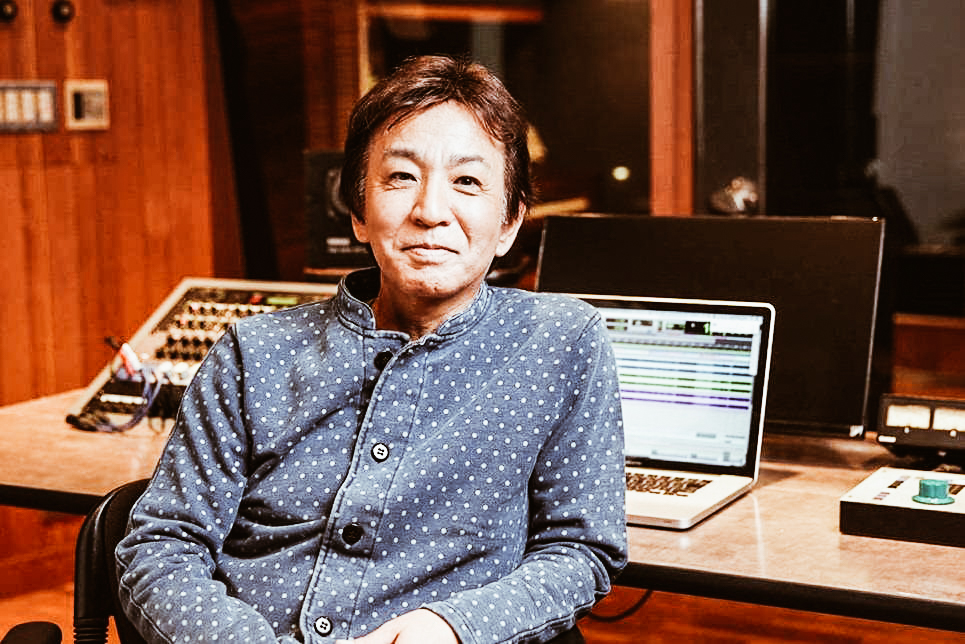
Singer-songwriter Tetsuji Hayashi says new technologies are rewriting the rules of how a song becomes a hit, "it could be from another country or another generation". It's been a few months now, but the 'Mayonaka no Door' case shows how the interaction between Japanese artists and international listeners has changed over the last few decades. International social media also allows a new generation to fall in love with an artist who might previously have been discarded from playlists simply because of her or his nationality. With the rise of K-pop and the unstoppable BTS, social media sites such as TikTok are also increasingly trending Japanese songs.
The power of TikTok
.
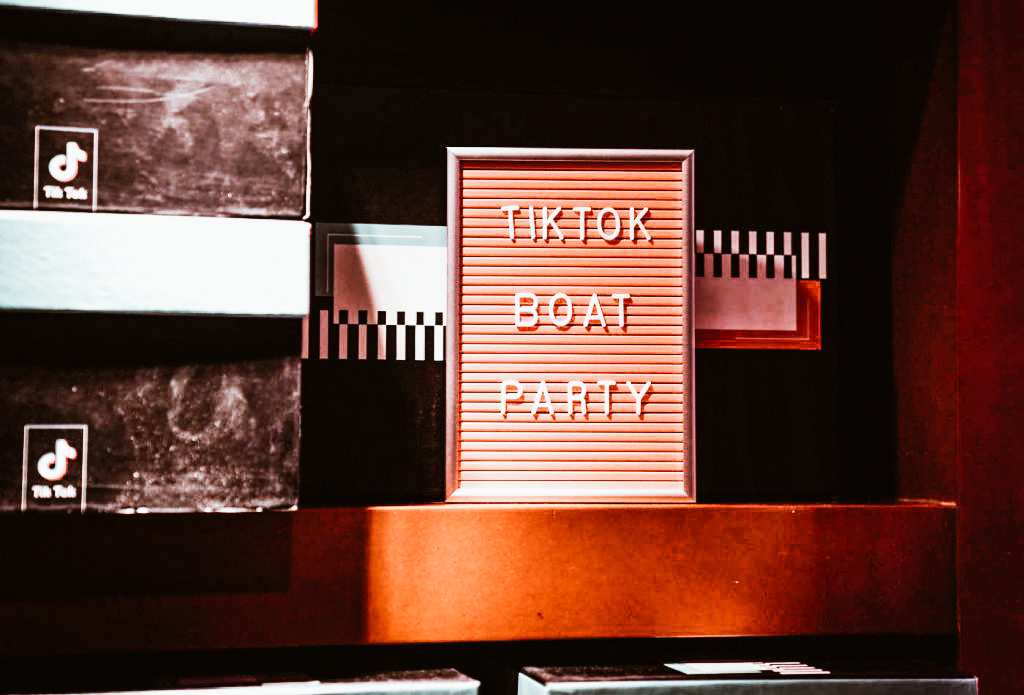
Based on recent statistics, TikTok users spend more than 850 minutes per month on the app, more than 14 hours per month. If we look at the data from October 2019 to March 2020, we can see a significant increase in the amount of time the average user spends on the app, also due to the lockdown.
This social media has spread like wildfire globally, particularly in Asian nations, becoming an entertainment outlet thanks in part to its search based on hashtags. In fact, as of June 2020, the most popular categories on TikTok all have over a billion views. If we go on to count lip-synching and dance videos, we arrive at a total of over 150 billion views.
2020 was marked by lockdowns, and it was during this time that people jumped on new media in search of entertainment and an outlet for their creativity. In fact, TikTok took second place on the list of most downloaded iPhone apps, surpassed only by Zoom for obvious reasons. TikTok even surpassed the downloads of Facebook, Messenger, Gmail, Netflix, YouTube and Instagram, across all app stores, making it the most popular app globally in 2020.
Moreover, in a world like the digital marketing one, we know how important the engagement rate of a social media is. Recent data show that engagement rate varies at different follower levels for Instagram, YouTube and other social media. However, at all follower levels, TikTok has a considerably higher rate than other platforms. In fact, Upfluence analysed that micro-influencers have an engagement rate of 17.96% on TikTok, compared to 3.86% on Instagram and 1.63% on YouTube. While mega-influencers have an engagement rate of 4.96% on TikTok, 1.21% on Instagram and 0.37% on YouTube.
The figures speak for themselves and in 2021 we can only expect a steady rise of this social network and who knows, maybe we can rediscover some other Japanese hits! Do you already have any idea on what the next music trend for TikTokers might be in 2021?
Ema tablets and the temples of Japan
The Japan Italy Bridge column continues to promote in-depth studies related to the world of Japan, today we talk about the Ema Tablets that we find in all the temples of Japan.
Raise your hand if you've never seen these curious wooden plates in an anime. Perhaps in a Shinto shrine, with a miko - the priestess dressed in red and white - going about her business. In any case, whether you've seen them before or not, today you can find out more.
Ema 絵馬 Japanese wooden votive tablets
Guest Author: Flavia
Translated as 'Horse Representation', Ema's are flat plaques designed to transcribe wishes and fears to be addressed to gods/spirits (kami) and buddhas. In other words, they represent a way for people to write a little message to the spiritual world. Formerly made of clay, they later began to be made of wood. Once a prayer has been written, the Ema is hung in a dedicated space at Shinto shrines as well as Buddhist temples. It is in fact a custom of Shinto origin that later spread to temples. Since they are all displayed together 'publicly', anyone can of course take a peek at them (it is important that the kami do the same).
However, it is also possible to keep them for oneself, as an heirloom. The great variety of representations, colours and styles that characterise them has always attracted the curiosity of folklorists. Together with the inscriptions on them, they represent a veritable prism through which a wide range of life stories are presented to us. A cross-section of spirituality that can show us the different colours of Japanese reality.
Ema are not the only religious objects designed to 'operate' in this sense, but they are perhaps the most widespread and can be found just about everywhere. The fact that they can be left in place distinguishes them from other religious objects such as Fuda (札) and O-Mamori (お守り). With an average width of 15 cm and a height of 9 cm, they can be very varied in size, shape and colour.
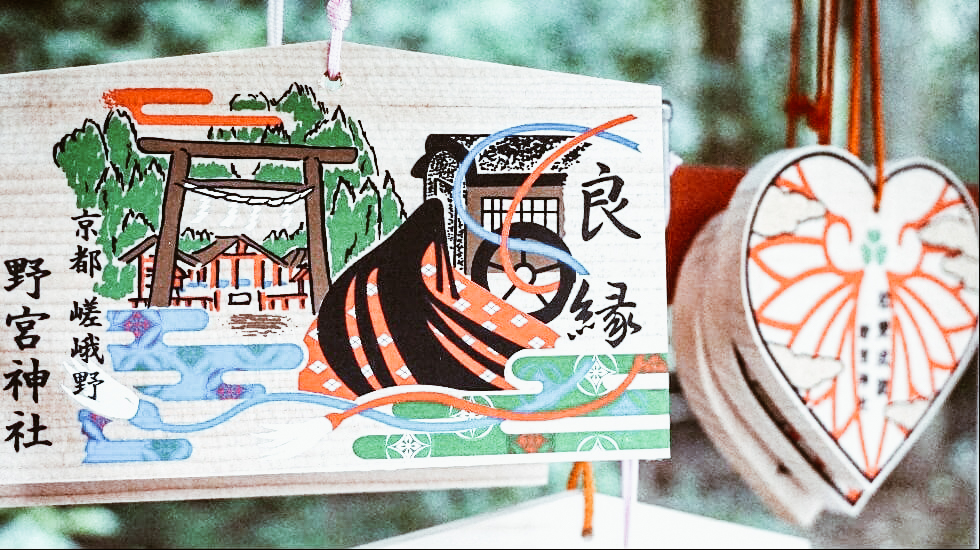
photo credits: sharing-kyoto.com/
The themes depicted can range from the following:
-
- the kami/buddha to whom the shrine or temple is dedicated (there may even be tablets depicting Thomas Edison!)
.
- the specific benefits that kami (spirits/goddesses) and buddhas are empowered to bestow;
- scenes on the origin and history of the place of worship;
- religious or cultural objects, such as zodiac animals of Chinese origin (some shrines are specifically dedicated to an animal-sign of the zodiac)
.
However, traditionally, particular importance is given to the representation of the horse, as suggested by the etymology of the name itself: e (絵) "image, drawing", but (馬) "horse".
Why the horse?
Short answer: because in ancient times people used to offer a horse to shrines and temples to obtain blessings and good luck. The figure of the 'sacred horse' still survives to this day, so much so that some religious centres use to keep one. And, if not in the flesh, in the form of a life-size model.
This sacredness of the horse originates from an ancient Shinto belief that saw the horse as an animal dear to the kami and as their messenger (although it is also important in Buddhism). One thing led to another, and so the horse quickly became a symbol carrying messages between the human world and the "other side". Or the Higan (彼岸) as it is also called in the anime/manga Noragami. (Noragami is highly recommended if you are attracted to the 'spiritual' genre, so to speak. Even through the author's fictional interpretation, it gives you a religious insight into Japan, and renders very well the relationship of the Japanese with spirituality).
Anyway, having established that our horse was considered special, the idea was to invoke a 'hand from heaven' in troublesome situations or events. For example, in times of drought they hoped for some rain (black horse) or, if not, for it to stop raining (white horse). However, in ancient times only a few people could afford to give a horse away easily. The majority of people tried to hold on to them as a valuable animal for their livelihood. Moreover, as the academic Ian Reader notes, such offerings could also prove costly for the temples if, at every prayer of some rich lord, they found themselves with a horse each time, which rightly had to be maintained, with the expense that this entailed.
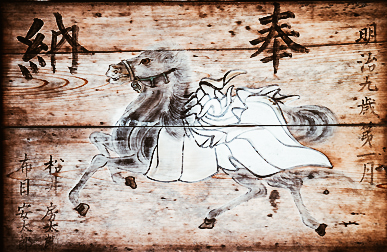
photo credits: japan-photo.de
It was in response to these contingent problems that the idea of depicting the horse began to emerge. Instead of using the animal in the flesh, why not make 'e-ma' ('horse-image') instead? An affordable solution, accessible to all.
Ema thus made their first appearance at the beginning of the 8th century (Nara period), while the first evidence comes to us from the mid-10th century (Heian period). The collection of Chinese poems and prose Honchō Bunsui or Monzui ( 本朝文粋 ) would be the very first work to mention the "ema". Many others would follow, one of which was the Konjaku monogatari (今昔物語).
E-ma: the origins of the tablets
.
Ema are said to have originated as a substitute for the horse in the act of conveying one's prayers to the supreme otherworldly entities. Although some voices have been heard to the contrary of this general line. Another reading of the events would in fact have it that the plates took on the definition "ema", simply because the horse design was more popular than other themes.
This is because the theme of the design changed depending on the request. Let's say that the design of an Ema was that of a horse: the requesting party's wish could concern the welfare of their horse (think of the case of the most humble, for whom such an animal was fundamental). If the wish did not concern a horse but, for example, a physical ailment, the design would depict the painful part of the body; and so on. So "ema" according to this view would not indicate that the tablets were given the same "agency" as the animal. Rather, it simply means that there were a lot of requests concerning horses, from which an extension of the designation would be triggered.
Another interpretation, however, emphasises that the sacredness of the horse is not a purely Shinto invention and that in Buddhism, too, the animal has its own significance. Thus, the origin of the Ema would perhaps be more to be found by looking back at the role of Buddhism, on which Japanese folk traditions draw extensively. In this regard, the scholar Gorai Shigeru saw a possible origin of the Ema in a particular folk custom, related to the Buddhist tradition O-Bon (お盆). This custom consists of carving horse forms from certain plants, again for votive purposes to the souls of the dead. Gorai seems to suggest that the origin of this custom may predate that attributed to the Ema or other similar forms of representation.
Both of these dissonant rumours about the origins of the Ema do not seem to be well supported by archaeology. In fact, the archaeological findings all seem to confirm the hypothesis of the need for an alternative means of transport to the horse, which at the same time 'took its place'. Something equivalent, embodying its spirit, its symbol: its image.
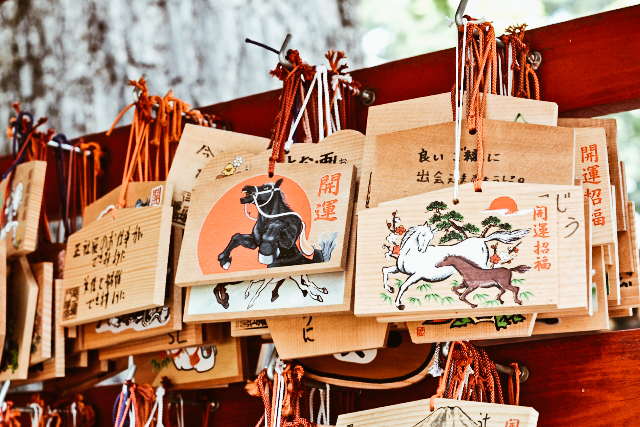
photo credits: shrine-temple-navi.jp
Ema as 'living objects'
.
The proof of this would come from the language itself. There are numerous ancient inscriptions on Ema that, from a linguistic point of view, unequivocally refer to the tablets as if they were talking about the horse itself. Let us look at some of them.
In the aforementioned Honchō Bunsui there is a reference to the Ema containing the symbol 匹 ("hiki", "biki" or "piki"). Reporting from the Reader, the expression would be: "色紙絵馬三匹 "or" 3 coloured sheets of horse pictures". Nowadays used as a counter for small animals, in Old Japanese the ideogram 匹 referred to stable animals, including horses. The combination of the word "ema" with this linguistic particle, whose function is to designate a living being, speaks volumes. Similar inscriptions have also been found in two shrines in Yamagata and Saitama, dating back to the 16th and 17th centuries. In this case, we find the ideogram 疋 instead of 匹, but the meaning and reading are the same. Again from Reader, it is: "shinme ippiki" (神馬一疋) and "ema ippiki" " 絵馬一疋 ". That is, "a sacred horse" and "an image of a horse".
However, although the hypothesis on the possible Buddhist origin of the tablets was not solid, Buddhism at least in retrospect is certainly present, given the Japanese syncretism. Among other things, in the temples, the Ema serve as a means of transmitting Buddhist religious doctrine, thus assuming a further function beyond that for which they were born. We are talking about those teachings about the importance of altruism or compassion (understood in Buddhism as 'empathy') or through images taken from stories about the Buddha. Although not entirely certain, it is estimated that the adoption of tablets by Buddhist temples began roughly between the 12th and 14th centuries (Kamakura period). Indeed, many of the Emaki - scroll artworks - of the period depict the Ema or horses themselves, both in Shinto shrines and Buddhist temples.
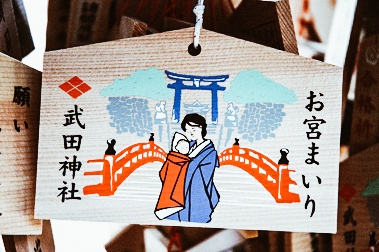

photo credits: japan-photo.de
Wooden tablets as an art form
.
Over the centuries, the designs of the Ema became more and more elaborate and varied, giving rise to a true folk art form. In particular, the Ō-ema (大絵馬), or "big ema", proved to be an important step in the development of Japanese art. In fact, after the birth of the Ō-ema, several great Japanese artists would draw on the ema style.
Created between the 14th and 16th centuries (Muromachi period), these Ema were at least one metre in height and width. They were donated to temples and shrines as a sign of gratitude - even after the fact, not only at the time of the request - and were placed in special spaces, the Ema-dō (絵馬堂). The oldest Ema-dō seems to have been sponsored by none other than... Toyotomi Hideyoshi in 1606, for the Kitano shrine in Kyoto. Also in Kyoto, the famous Kiyomizu-dera (清水寺) has several Ō-ema, originally donated by merchants as thanks for the safe return of their trading ships.
The consequence of this artistic development was the emergence of a "caste" of artists specialised in ema painting, which flourished in the Edo or Tokugawa period. This period - of economic expansion, especially at the beginning - led to an increase in the demand for professionals, enabling them to make a living from producing small ema paintings alone.

photo credits: japan-photo.de
The Ema language: symbolism
.
It was during this period that most of the symbols and themes reproduced on tablets originated. But to what does this need to put thoughts and feelings on paper - or rather, on wood - owe? This need is rooted in the folkloristic belief that a desire has a better chance of manifesting itself in reality if it is expressed in words, because by doing so, it gives it form. We must also bear in mind that in ancient times literacy was reserved for a small segment of the population. An alternative language to words, immediately comprehensible to all, was, therefore, necessary: this is the encounter between folklore and symbolism. Symbolic language thus proved to be the most effective way of doing this, through the depiction of specific problems or the desired 'grace'.
The representations could range from the well-being of children to health, fertility and even sexual desires. If, for example, a wish concerning childbirth, an Ema with a dog was the most appropriate choice. While the image of the white fox still indicates prosperity and abundance. For requests concerning health, the part of the body with the illness was also depicted. For those concerning fertility and sexuality, well: the depictions were unequivocal.

photo credits: himawari-japan.com
The type of representation can therefore be purely symbolic, drawn from tradition (see the example of the dog) or directly portray the physical object of interest (body parts). In any case, let us remember that such symbology, whether analogical or realistic, is accompanied by the thaumaturgical function of the various religious entities worshipped (spirits/gods/Buddhas). As we said at the beginning, 'protective deities' of a particular sphere of life (health, education and so on) are also a main iconic subject of the Ema. These are just examples, as subjects and styles can be as varied as people's requests and desires.
Ema language: forms and words
.
In the transition to the contemporary age, the traditional themes depicted have not changed much compared to ancient times. Of course there has been an addition of new subjects (see Thomas Edison or, why not, anime characters). However, we can observe an increase in the use of verbal language. We have already seen one reason for this: literacy. Literacy has thus added verbal language to symbolic language, allowing ordinary people to no longer depend solely on the former. So it is not uncommon nowadays to resort to linguistic games of homonymy and assonance to accompany the symbology of images.
Typical is the case of those Gokaku-ema (互角絵馬) - pentagonal tablets - with an 'educational' theme. They are designed for students, constantly seeking the support of the kami for success in their studies. Here, these Ema owe their shape to a pseudo-omonimy between the expression "gokaku" (互角) - pentagon - and "gōkaku" (合格) which indicates success in study. The subject of the Ema can therefore also be conveyed by the shape of the tablet itself! And, as you can see, it can sometimes make use of verbal meanings. A case of symbolism using verbal language is that of an Ema depicting an octopus, "tako" in Japanese (蛸) used to request help in eliminating corns. The term "callus" is spelled differently (胼胝) but is also pronounced "tako".
We can therefore see - to the delight of linguists and glottologists - that the ema language is made up of all these dimensions of communication. Symbols, shapes and words are thus integrated and intertwined in a single space. We should also remember that the graphic characters of the Japanese language derive from their ancestor pictograms, which directly represented visual objects!

photo credits: blog.livedoor.jp
Verbal language is very helpful in interpreting the meaning of a tablet's message. Because understanding the true meaning of symbolic language, needless to say, may not always be possible. Obviously, the use of verbal language does not guarantee 100% understanding, it depends on each case: there may be quite clear inscriptions, others more cryptic. The scholar Jennifer Robertson, who dealt with the Ema at the time of the Second World War, found a particular ambiguity in the tablets of this era. For this reason, she stresses the need to always take into account different possible interpretations.
Kogaeshi and Mabiki Ema, a special case
.
There is, however, a special type of Ema, where the message is neither a concern nor a need for something that is desired. A request, yes, but different from the others: a request for forgiveness. We are talking about all those plates that concern the delicate case of children, foetuses, aborted or stillborn: the so-called mizuko (水子). Ema concerning mizuko are called Kogaeshi (子がえし - lit. "sending back the baby"). Or even Mabiki (間引き - let's call it "reduction") which can refer to general infanticide.
In Buddhist temples specialising in mizuko (to which memorials are also dedicated), Kogaeshi Ema are hung in a special space, just for them, next to the statue of Jizō. In Buddhism, Jizō is a protective figure of the souls of children who died before their parents. According to belief, their spirits cannot cross the Sanzu - the river that separates earthly life from the "Other Side" - because they have not accumulated enough good deeds, due to premature death. They would therefore be condemned to pile up stones on the bank of the mystical river, but Jizō would protect them from demons and allow them to listen to mantras.
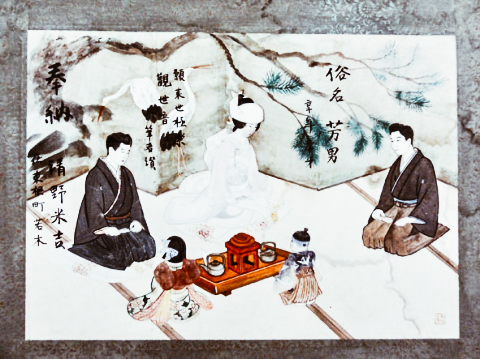
photo credits: hotoke-antiques.com
They differ from normal Ema, because their inscriptions are addressed to the spirit of the child, rather than to kami or buddha. Of course, they express all the anguish, sadness, regret of the mother or sometimes even both parents. The most common inscription, according to Reader, is a simple 'Gomen ne' (ごめんね) or 'I am sorry' ['Forgive me'] together with the reason for the gesture. This phenomenon was particularly striking at the turn of the late Edo and early Meiji periods, when extreme poverty and famine hit the Japanese population hard. The use of Mabiki Ema, however, has continued until contemporary times.
Mukasari Ema, another particular case
.
Another case of a death-related plaque is that of the Mukasari-ema (ムカサリ絵馬). In fact, these tablets were created for a singular purpose: to complete the CDs. Shirei Kekkon (死霊結婚), the marriages between dead souls. They belong to the category of large ema and, according to Robertson, their diffusion seems to be limited to Okinawa and the north-east of Japan, in the Yamagata Prefecture. "Mukasari' would in fact mean 'marriage' in the Yamagata dialect (not coincidentally written in the katakana alphabet). In essence, these Mukasari-ema allow to "simulate" in the representation of the plate, the marriage of a person who died single or unmarried. It is a way of allowing the soul to find peace, preventing it from becoming a tormented spirit.
For if that were to happen, the spirit might remain anchored in the earthly world, through grief, for not having been able to experience the joy of starting a family. Thus, haunting the world of the living. It is thus also a way for the family of the deceased person, however fictitious, to realise that dream. In modern times, one can also resort to photographs, if any, of the person in wedding attire while still alive. Such Mukasari-ema were particularly used at the time of the Second World War, for the reason easily imaginable.
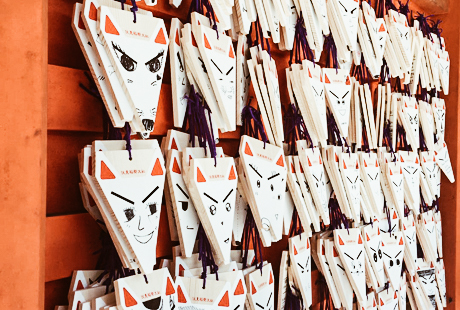
photo credits: journals.openedition.org
These are two borderline cases, the exception to the rule. Because, as is now clear, the Ema are made with an eye to human wellbeing, in the here and now, be it individual or extended to the whole of humanity. But they are still part of the Ema world and, if there is something that they have in common with the others, it is a significant function: the psychological function of releasing an inner burden. The very act of 'unloading' onto the tablets what one has inside - thoughts, desires, needs and concerns - is a profoundly cathartic act. Especially if those desires and needs run counter to the norms imposed by society. As Reader notes, a way for individuals to survive in situations beyond their normal control and the only way to survive, from social control.
People's desires
.
But in general, what specifically do people who have recourse to EMA want? We could identify two macro-areas: protection and success.
Health is certainly one of them, and it is a major theme at all times. As mentioned in the introduction, kami and buddha are associated with healing powers, attributed by extension also to shrines and temples dedicated to them. Requests for 'mercy' from illnesses and diseases - or for preventive protection from any danger - may concern the applicant himself, his family members, or other persons. Requests for success, which is a very popular area, may also concern the applicant or third parties, or a 'collective self' of which the applicant is a part. This is the case of all those requests made to propitiate the success of one's own company or institution of any other nature. There are Ema's for example where the requester is concerned with the success of their favourite team (baseball is very popular in Japan).
But there is one realm that stands out above them all: education. The contemporary Japanese education system is very rigid and competitive, and the pressure of failure on children can be particularly taxing, psychologically speaking. So, you want for that reason alone. Or even for inspiration - seeing friends or groups of peers go to religious centres to write their plaques - the fact remains that students represent a good chunk of the Ema's "clientele". In addition to asking for 'heaven's favour' in the success of tests and examinations, Ema registration can represent a moment of light-heartedness for the very young.
How could we not mention at this point the kami shinto Tenjin (天神), patron of culture and education, certainly popular among Japanese students. (Incidentally, Tenjin is the deification of a person who really existed between the 9th and 10th centuries AD! A Heian court scholar and politician, in life his real name was actually Sugawara no Michizane). His shrines are busiest in the cold months, especially January and early February, when the infamous "entrance exam hell" takes place.
There is no shortage of requests concerning material well-being as well as those concerning affairs of the heart. Even those to "sever ties" with the help of the special Enkiri-ema (縁切り) to express the desire to break the cord that binds to people, things (vices, addictions) or situations (diseases).
The incineration of the tablets
Yes, this is an important stage in the life of the tablets: the final one. Both Shinto shrines and Buddhist temples periodically burn the tablets offered for a dual purpose: ritual but also practical. (In Japanese religiosity, the practical and spiritual dimensions manage to marry serenely). The pragmatic motivation is simply... the need to make space! After all, hundreds and hundreds of tablets accumulate over time.
Spiritual motivation, on the other hand, is that through the ritual of the bonfire, people's wishes and requests can reach the realm of the kami and the buddha. Kami and Buddha who, I remind you, should have already read the Ema, always available in temples/sanctuaries, before the fire rituals. Once again Noragami comes to our aid, with its story so illustrative. It is not unusual to see the Tenjin himself wandering around in the sanctuaries dedicated to him, next to the Ema tablets. Noragami also touches on the theme of severing ties, which we spoke about earlier (in short, you get the hint: watch/read it).
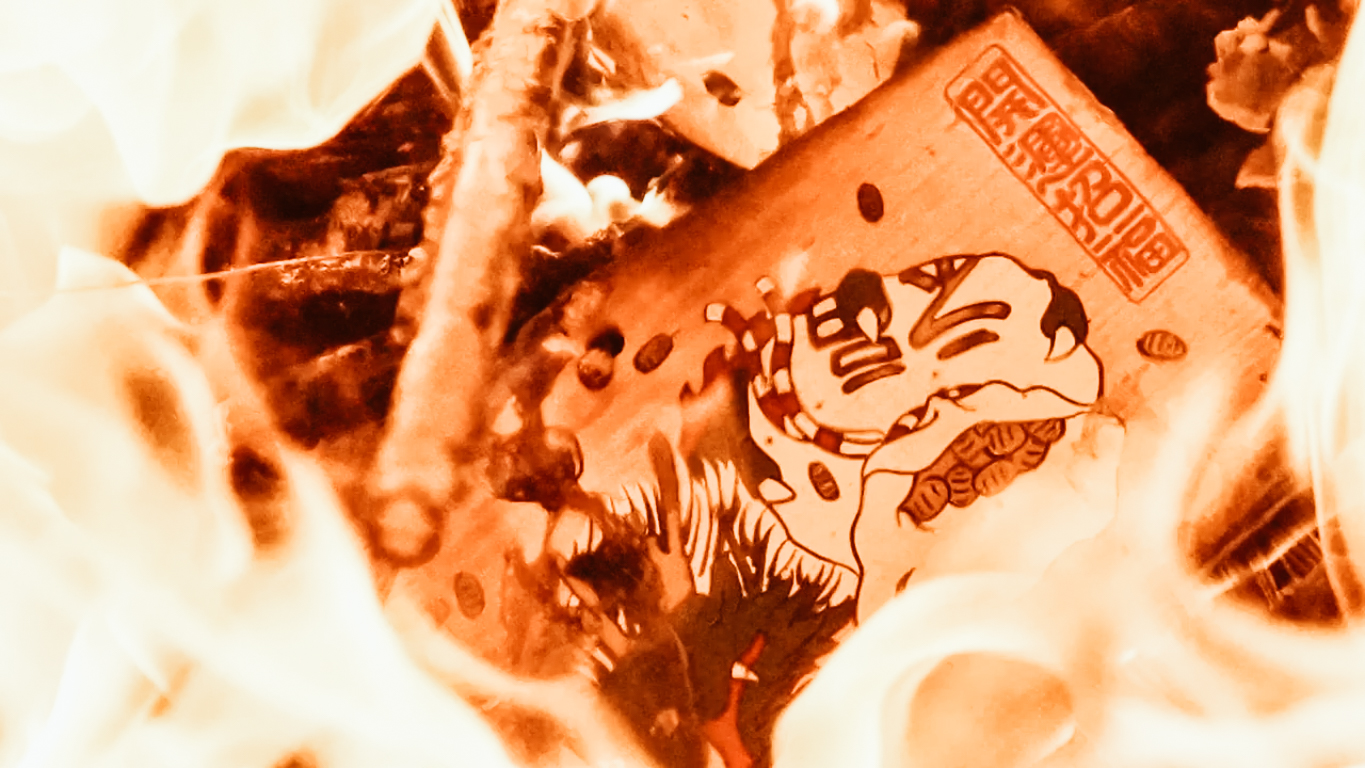
photo credits: https://youtu.be/Vn6AoThrXyc
When does this ritual take place?
The changeover to the new year is the moment that brings everyone together. However, it can also take place at other times, depending on each religious centre. Tenjin shrines, for example, usually do it at the end of October, just after the festivals dedicated to him.
The period around New Year's Eve, O-Shogatsu (お正月), is however ideal for everyone, being a time of transition. What better time to symbolically release what has now had its day, releasing the wishes and demands of the old year? And at the same time, what more propitious time to usher in the new year, perhaps by writing new ones? Boy, so many commissions for these kamis and buddhas from the very first sighs of the new year! The phrase "Getting rid of the old to make room for the new", in this context, can only fit well, lending itself more than perfectly to this dual interpretation.
Nothing rains from the sky!
.
But be careful not to misunderstand. Don't think that this is merely an act of superstition: nothing could be further from the truth! Resorting to the Ema is not the same as thinking of folding one's arms and waiting for an otherworldly grace. Those who resort to the EMA generally know, even with a hypothetical "favour from heaven", that 95% of the chances of success are given by their own commitment. And one's own mental attitude. I refer, of course, to all situations where one has power of action. In cases where this is not possible, the only thing to do is to try to act, as much as you can, on your mental attitude.
Ema tablets testify to the search for change or safety from some risk or danger. They have the power to approach even the most "secular", those who perhaps do not lead a great spiritual life. This may be the case for many young people, or for children, who may see in the tablets a playful side, as well as a support for their studies. The meaning of offering an Ema tablet is basically to cope with a crisis, of whatever nature, by resorting to the supernatural dimension, which has always been a source of support. In other words, the Ema performs a function of comfort and support. And, by extension, an important therapeutic function.
Hiroshima, a prefecture waiting to be discovered
Japan Italy Bridge promotes Japan and creates a real bridge between Japan and Italy and today we focus on Hiroshima. The Japan National Tourism Organization promotes tourism and this month focuses on Hiroshima prefecture. Let's give a more in-depth look.
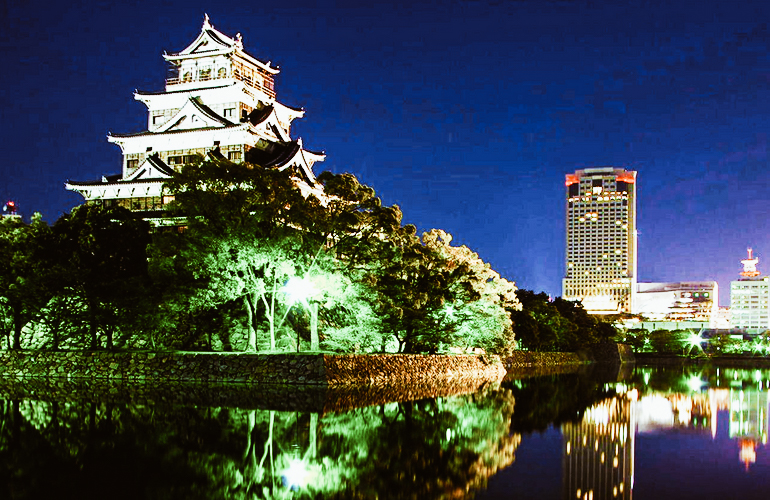
Hiroshima, a prefecture waiting to be discovered
Author: SaiKaiAngel
History

photo credits: un.org
The city of Hiroshima was founded in 1589, during the feudal period Sengoku by the Japanese daimyō Mōri Terumoto who made it the capital of his feud. After the battle of Sekigahara for territorial possessions, Terumoto had to surrender Hiroshima to the winner Tokugawa Ieyasu, who decided to have it administered by the daimyō Fukushima Masanori.
In 1871 the city became the capital of the homonymous prefecture and an important commercial and naval centre of Japan. At the end of the 19th century, Hiroshima witnessed further industrialization, which culminated with the war facilities erected during the Russian -Japanese war of 1904, and became Mazda's headquarters in 1920. In 1938 it became part of the broader war scenario of the Second World War. Unfortunately, on August 6, 1945, at 8:16 and 8 seconds, the bomb called Little Boy exploded at 576 meters, with a power equal to 12,500 tons of TNT. The nuclear explosion killed about 260,000 people and injured more than 160,000 in the months immediately following due to radiation.
The Territory
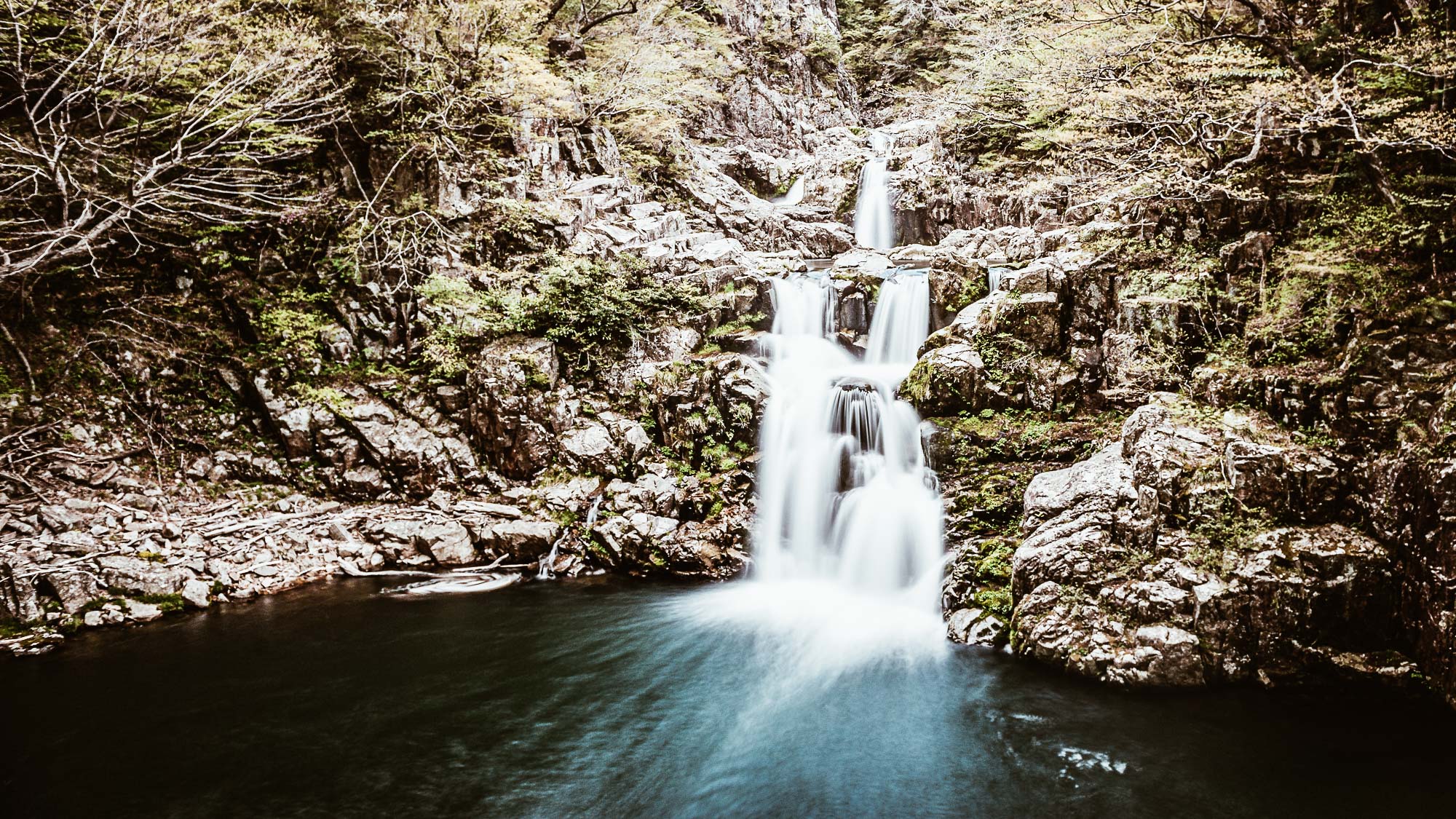
photo credits: locationscout.net
The centre lies on the harbour bay towards the sea of Aki-nada and the territory is hilly. Hiroshima has many islands such as Etajima-Nomi and Itsukushima and, inland, the territory becomes rockier with the Gosasou and Shiraki mountains as a road to the Ota River.
As JNTO also explains and assures, you can explore Japan in absolute safety! Visit Hiroshima without fear and in complete peace of mind, you will always be guaranteed the right distance, temperature detection in shops and places of interest, protection such as the mask. Do not risk anything, as the first interest of the person and the tourist there is always safety in every place.
Take advantage to visit this beautiful prefecture that gives us not only great emotions but also enchanting places that you will remember forever. Despite the tragedy caused by the explosion of the atomic bomb, Hiroshima had doubled its pre-war population in 1974 and was considered the "peace capital" of the world. Hiroshima is home to important attractions to visit absolutely, let's see them in detail.
Hiroshima Peace Memorial Park
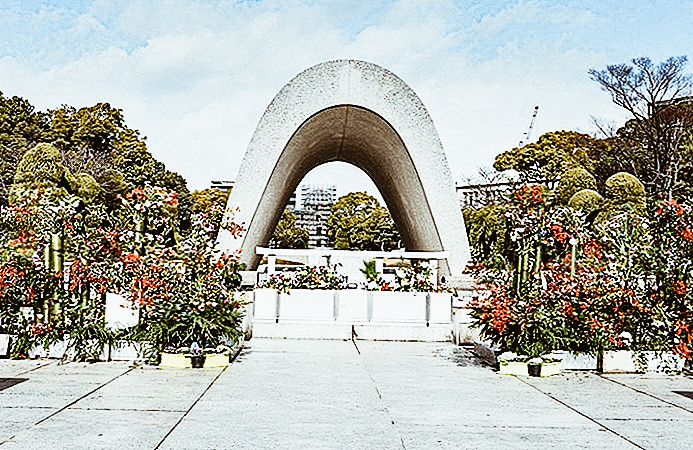
photo credits: theplanetsworld.com
Symbol of the need for eternal peace, it commemorates the numerous victims of the first nuclear attack and is located right in the epicentre of the explosion. Hiroshima Peace Memorial Park boasts many important monuments, museums related to the events of that day and its consequences. In addition to the beautiful gardens with their cherry blossoms, we find the Peace Memorial Museum, the Memorial Cenotaph, the Flame of Peace, and the Atom Bomb Dome with the ruins of the old Chamber of Industry and Commerce. A very interesting place is the Children's Peace Monument and the Monument to the victims of the Atom Bomb.
Shukkei-en Garden
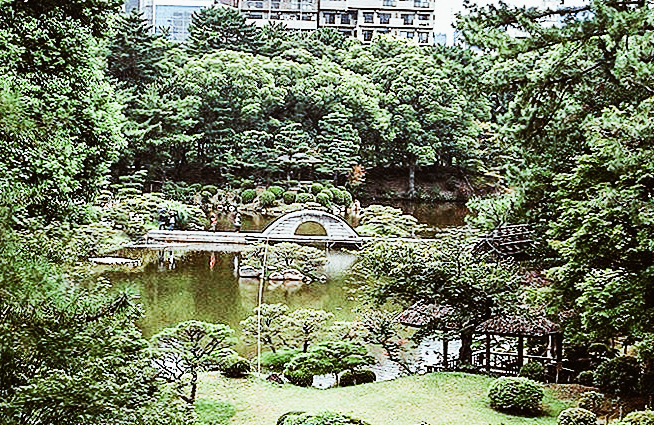
photo credits: theplanetsworld.com
The Shukkei-en Garden is a wonderful garden on the banks of the river Ōta. A space of peace and quiet desired by Asano Nagaakira in 1620. This garden was once the home of Emperor Meiji, and after the damage caused by the explosion in 1945, they literally flourished again in 1951 in all their beauty. The gardens opened to the public after being donated to the city in 1940 and, despite the heavy damage caused by the 1945 nuclear attack, the gardens reopened in all their former glory in 1951. Bridges, paths, a true landscape of calm and relaxation pampered by the sound of streams that draw from the river Ōta.
Hiroshima Peace Memorial Museum
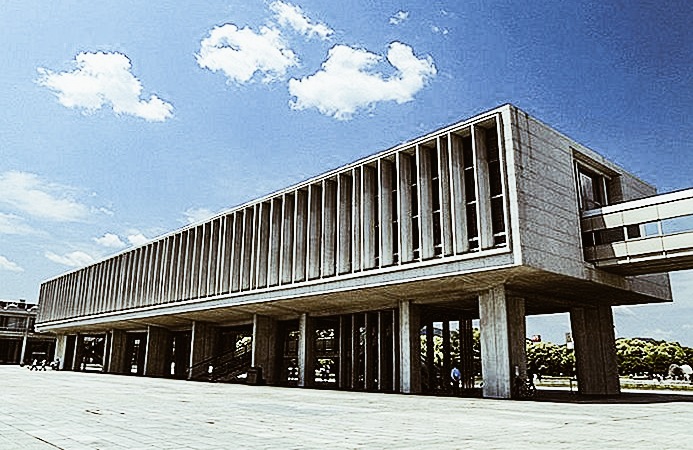
photo credits: theplanetsworld.com
The exhibitions focused on the explosion of the atomic bomb of the Peace Memorial Museum are very hard and very painful and are exhibited together with exhibitions that extol world peace. This museum is one of the sites that cannot be missed during your trip to Japan, both to experience the rebirth of a prefecture and to pay homage to those who lost their lives during the terrible bombing.
Hiroshima Castle

photo credits: theplanetsworld.com
The Castle of Hiroshima (Rijō), also known as Carp Castle, was the residence of Fukushima Masanori and then passed into the possession of the famous Asano Nagaakira in 1619. In the castle and in particular, in the tower, there is a museum about the history of the castle with images of Hiroshima. In the castle, we can also find three trees that survived the atomic bomb and a bunker used for radio transmissions after the explosion.
Itsukushima island sanctuary
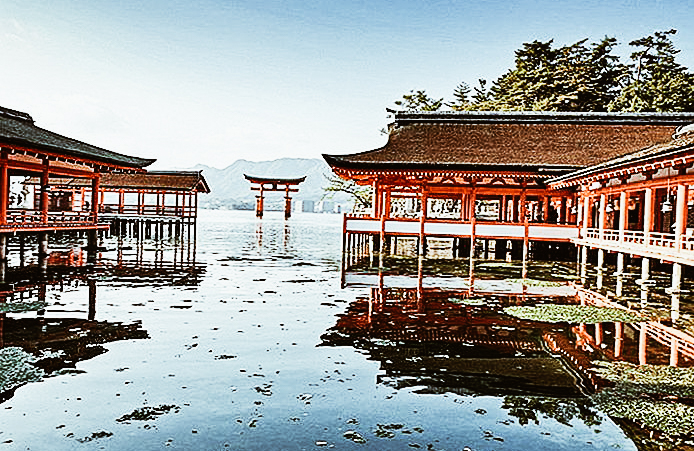
photo credits: theplanetsworld.com
Miyajima, the Sanctuary Island, is famous for the sanctuary of Itsukushima, dedicated to the princesses Ichikishimahime, Tagorihime and Tagitsu-hime, daughters of the wind god Susanoo. The buildings with the high tide, seem to float magically on the water because they are located on a bay supported by stilts. The show is not to be missed, a feast of colours, red wooden structures and white walls. Honden (Main Hall), Heiden (the offering hall). Haiden (the prayer hall), Senjokaku (the Hall of a Thousand Carpets) and Takabutai used for the Bugaku and Kagura dances are the places you cannot miss during your visit to Hiroshima.
Memorial Cathedral for World Peace
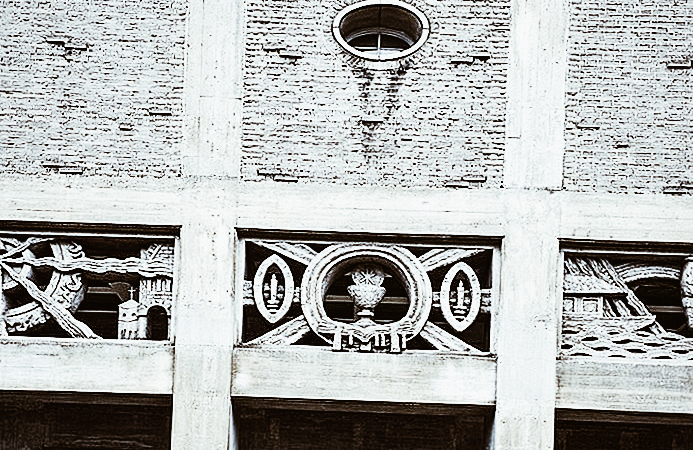
photo credits: theplanetsworld.com
The Memorial Cathedral is one of the largest churches in Asia, built in 1954 by German Jesuit priest Hugo Lassalle from a design by Japanese architect Murano Tohgo. The Memorial Cathedral has four bells in the 46-meter tower, an organ provided by the city of Cologne and the bronze doors of Düsseldorf.
The Mitaki-dera temple

photo credits: theplanetsworld.com
One of the most beautiful temples in Hiroshima is Mitaki-dera. Built in 809 and rebuilt after the war, it is also famous for its beautiful gardens, which in autumn give a fiery red show to visitors. Also known as the Temple of the Three Falls for its location at the foot of Mount Mitaki, the temple is famous for its red lacquer pagoda, Tahoto and waterfalls.
Fudoin Temple

photo credits: japanvisitor.com
Another beautiful place to visit is the Temple of Fudoin, the architecture of the Muromachi period between the 14th and 16th century with a large main hall containing a carved statue designated as a national treasure.
Hiroshima museums
The city of Hiroshima and the whole prefecture are also famous for the many museums in the area. Below are the ones that we believe are unmissable on your trip to Hiroshima.
Hiroshima Prefectural Art Museum (Hiroshima Kenritsu Bijutsukan)
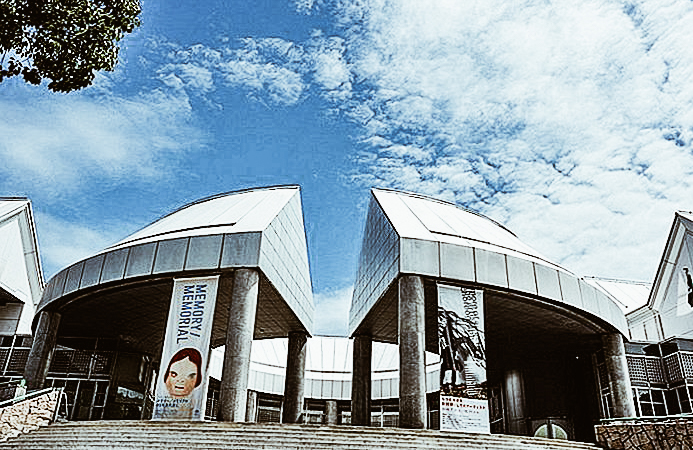
photo credits: theplanetsworld.com
This Museum, opened in 1968, focuses on local artists with collections related to the atomic bombardment and a children's gallery.
Hiroshima Museum of Art
The Hiroshima Museum of Art consists of eight world-class art galleries. We can find the collection of paintings by European masters such as Monet, Renoir, Degas, Maillol and Picasso together with leading Japanese artists such as Ryohei Koiso and Yuzo Saeki.
Hiroshima City Asa Zoological Park

photo credits: japantravel.com
Opened in 1971, the Asa Zoological Park is about 124 hectares large and is home to 170 species of animals, like minor pandas, Japanese giant salamanders, lions, giraffes and rhinos. A place to distract yourself from the other important places in Hiroshima and to entertain the mind, not only for children but also for adults!
Food and beverage
Obviously, with such an interesting trip, we can't forget to eat and drink and that's why Hiroshima gives us unique experiences here too! Not to be forgotten are five famous Sakaguras from Hiroshima thanks to which we can enjoy exceptional sake. Read carefully here for a unique experience in the Japanese tradition.
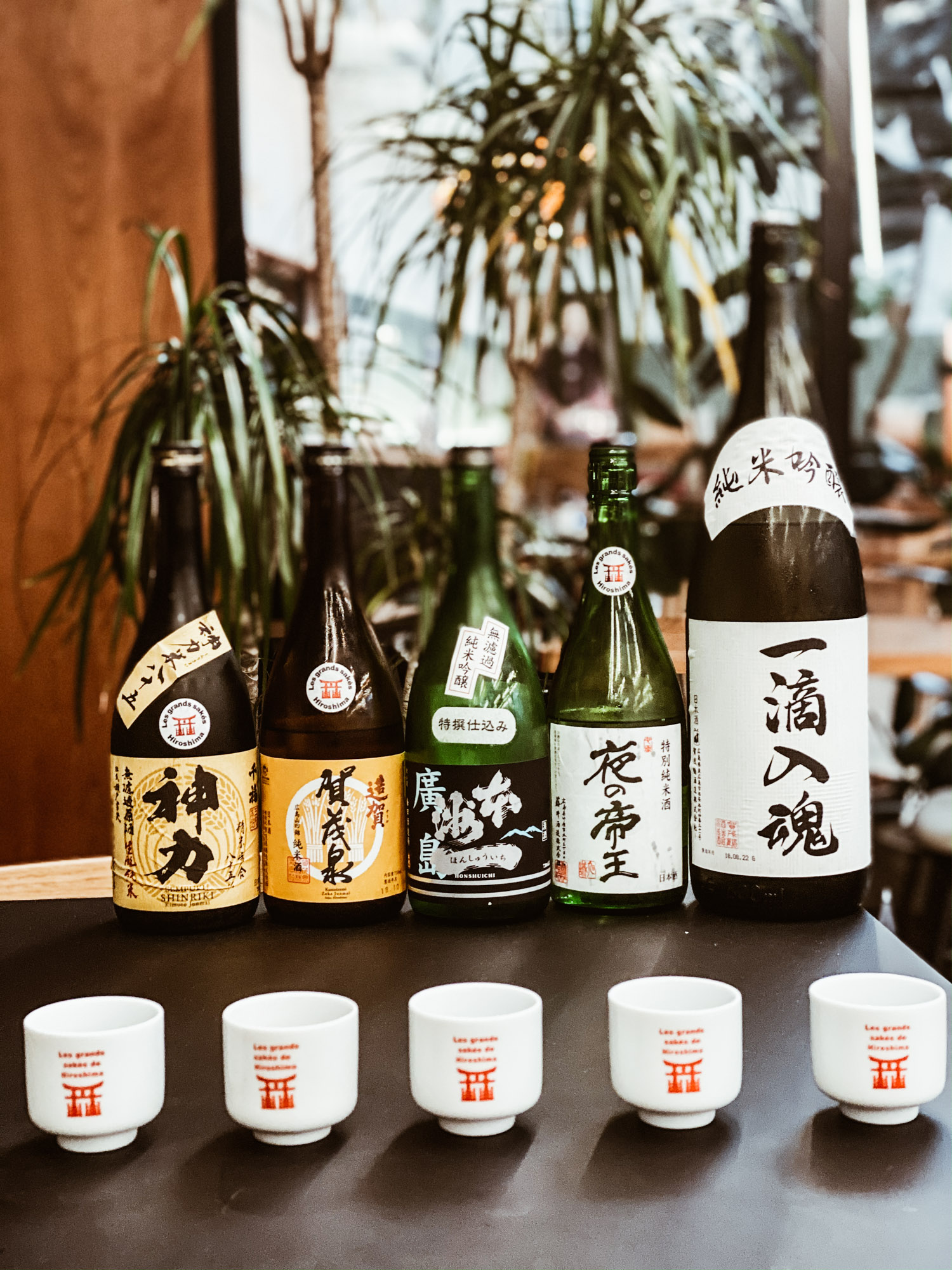
Honshu ichi - Brasserie UmedaCo., Ltd.
Category】Junmai Ginjo
【Ingredients】Rice, Koji rice (Senbon Nishiki / Hiroshima product)
【Polishing ratio】60%
【Alcohol content】 16.8 °
【Glucose density】 1.8
【Acidity】1.7
【Sake Gradation】 +5
【Aroma】Sweet fruity aroma
【Pairing】Fish in general, chicken, sweets with strong flavour such as cheesecake
【Features】
A Junmai Ginjo Sake produced by Hiroshima Prefecture, preparing "Senbon Nishiki" rice with Hiroshima Ginjo yeast. It is characterized by the fruity aroma of Ginjo sake, slightly sweet taste. It can be enjoyed with fish and cheese dishes.
‘Zoka’ - Kamoizumi Shuzo Co., Ltd. 創業 1912年 founded in 1912
【Category】Junmai
【Ingredients】Rice, Koji, Water (Rice: Yamadanishiki/100% Higashiroshima )
【Polishing ratio】65%
【Alcohol content】16°
【Glucose density】2.0%
【Acidity】1.8
【Sake Gradation】±0
【Aroma】Sweet chestnut, with a strong smell of rice and wheat.
【Pairing】Boiled tofu, sweet with citrus fruits, marinated food.
【Features】
Junmai Daiginjo is made from "Yamada Nishiki" sake rice grown in a field located about 6 km north of the brewery, using Saijo underground water and the Hiroshima Mori technique. The delicate aroma and sweetness of the transparent and gentle rice harmonize perfectly with the fresh acidity. You can enjoy it cooled with a thin cup or glass of wine. Sake certified with Saijo JAPAN brand)
Itteki Nyukon - KamotsuruCo., Ltd.
【Category】Junmai Ginjoshu
【Ingredients】Rice, Koji rice(100% Hiroshima rice)
【Polishing ratio】60%
【Alcohol Gradation】15 - 16 °
【Glucose density】1.0
【Acidity】1.6
【Sake Gradation】+3
【Sweet】Aroma
【Pairing】Sauté of chicken, Gelée of white peaches
【Features】
This sake has as first material the rice suitable for its preparation. A slightly dry Junmai Ginjo sake that goes well with foods with the right acidity, good both cold and hot.
Sempuku Shinriki 【Nickname】Filled with happiness - Brasserie MiyakeCo., Ltd. Sempuku Shinriki
【Category】Saké Daiginjo
【Ingredients】Rice, Koji (Shinriki) rice
【Polishing ratio】 85%
【Alcohol content】 19.0 °
【Glucose density】 1.2
【Acidity】2.3
【Sake Gradation】 +5
【Aroma】Mature aroma, almond
【Pairing】Sukiyaki, Steak, Cheese, Chocolate
【Features】
Kamiriki rice, which is the origin of Chifuku, is 85% processed and is close to the processing speed of rice from the Meiji and Taisho eras. A bottle full of feelings for the preparation of sake, especially suitable for people who particularly care about Japanese sake.
Night Emperor - Fuji Shuzo
【Category】Junmai
【Ingredients】Rice, Hattan Nishiki Koji, Water
【Polishing ratio】65%
【Alcohol content】 15 °
【Glucose density】N/A
【Acidity】1.6
【Aroma】Moscato, walnuts
【Sake Gradation】 +9
【Pairing】Tartare, Lemon Grilled Chicken
【Features】
Night Emperor is a mixed Hachitan Nishiki based liqueur produced in Hiroshima Prefecture. This versatile liqueur is easy to combine with any dish. Soft taste that takes advantage of the characteristics of fresh water preparation and keeps the alcohol content low while maintaining the taste of koji and rice. Good tasted both cold and hot.
We have given you some examples and information that will surely push you to live the Hiroshima experience, but there is even more! Hiroshima prefecture is a treasure chest full of treasures just waiting to be explored by you! What are you waiting for? We at Japan Italy Bridge do not make us repeat it twice, it will be a joy both for the eyes and for the palate and the heart and soul. We will all come out of it enriched!














